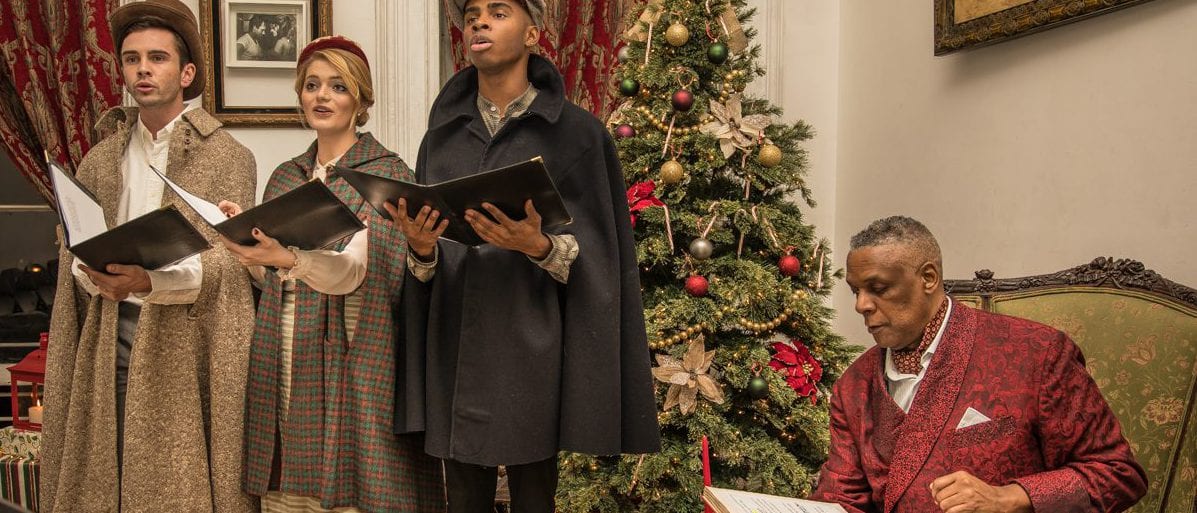Origin’s A Christmas Carol is a tradition that one could easily slip into. When you first enter the old Chelsea townhouse, all your senses are greeted with the warmth of Christmas Past: crisp caroling can be heard from somewhere in the building, and the narrow corridors and steep wooden stairs lead you upstairs to where the smell of freshly baked pastries is wafting. A small room overlooking the street is decked out with Christmas lights, piles of wrapped presents, and a beaming Christmas tree. With a glass of warm mulled wine in one hand and a mince pie in the other, and an array of Victorian carol-singers dressed up as if they just stepped in off the street from 1850s London, you feel like you’ve just settled in when synthetic thunder rumbles, and the doors burst open.
Origin Theatre Company’s production of A Christmas Carol brings Charles Dickens’ own original abridged stage version of the tale to life. Unlike larger-scale productions which might feature an entire cast of characters, the Christmas Carol that Origin Theatre has decided to put on is the same text that Dickens himself took on tour after writing the story in 1843. By adapting such an intimate version, and in such an intimate setting (made so both by the sharing of a meal and the size of the room) director Erwin Maas invites the audience to get a little closer to the story.
Some may know every word of A Christmas Carol. Some may be familiar with the plot or the characters. Some may know it only as a vague notion that gets lost amongst myriad other Christmas traditions. But no matter your knowledge of A Christmas Carol, the comfort of the room and the striking entrance of our narrator is guarantee enough that a treat is in store. The evening’s host, with sonorous voice and impressive resume, is Elmore James. He, like the carolers, is dressed in period clothes, and after delivering us the startling news – that “Marley is dead” – he settles into a cozy armchair by the fireplace, reading from a large tome by the light of the Christmas tree.
James performs A Christmas Carol with all the over-the-top theatricality that only a Broadway veteran can bring. He reads the different Christmas spirits from different corners of the room, never failing to draw in the audience with animated eye contact. He even brings the Christmas carols that pepper the script to life, songs that the Victorians knew and that are still sung in churches and on street corners in the spirit of Christmas today. He creates personalities for each of the Christmas spirits using only his voice, crafting one to be timid and knowing, another to be joyful but aloof, and the third enigmatic.
The other star of the show is the soundtrack, coordinated by Sam LaFrage. James’s reading is accompanied by rolling thunderclouds, the clinking of unseen glasses, merry laughing, distant carolling, and all the spooky music needed to play in the ghost of a dead friend.
In some ways the performance is nostalgic – certainly for anyone who grew up with Charles Dickens’ classic story as a part of their holiday celebrations; the old familiar lines and the Christmas cheer oozing from the corners of the space feel something like coming home. In some ways, it’s even slightly exotic – at least for us Americans, between the British delicacies and the Victorian clothes. In other ways, it’s thrilling. There’s nothing quite like having a great story read to you, and getting the chance to savour every word.

